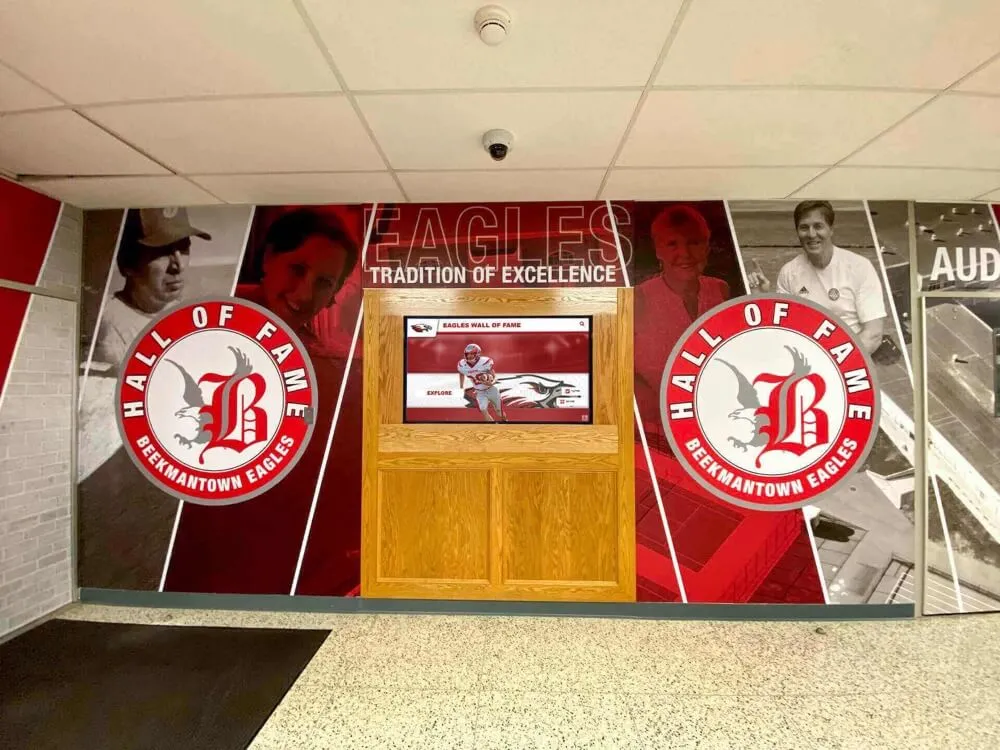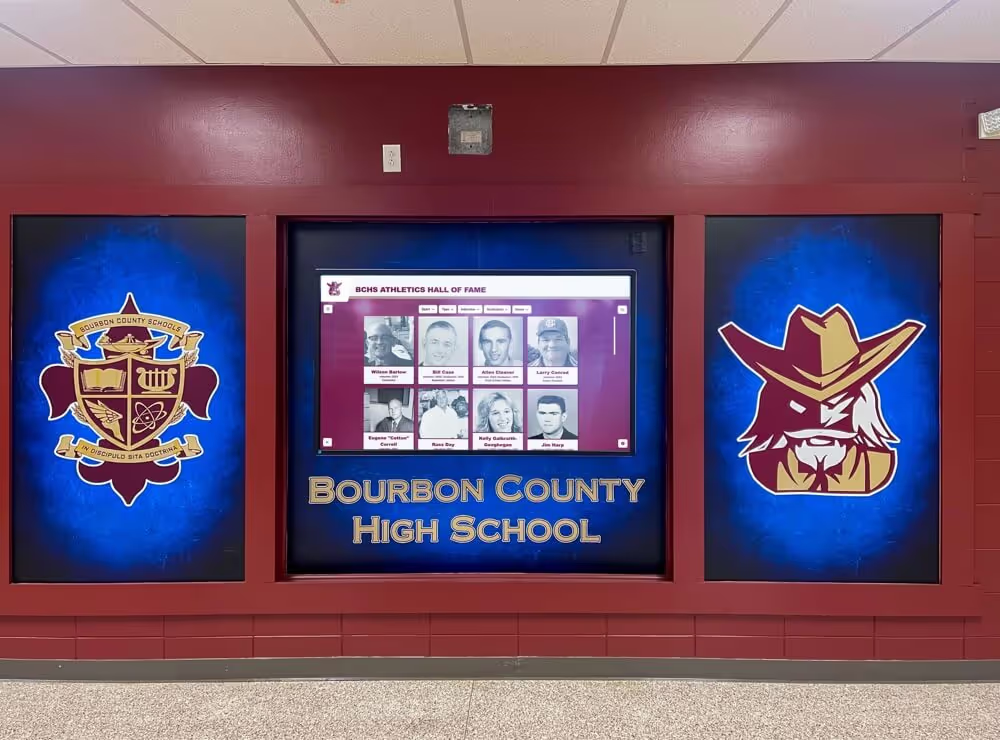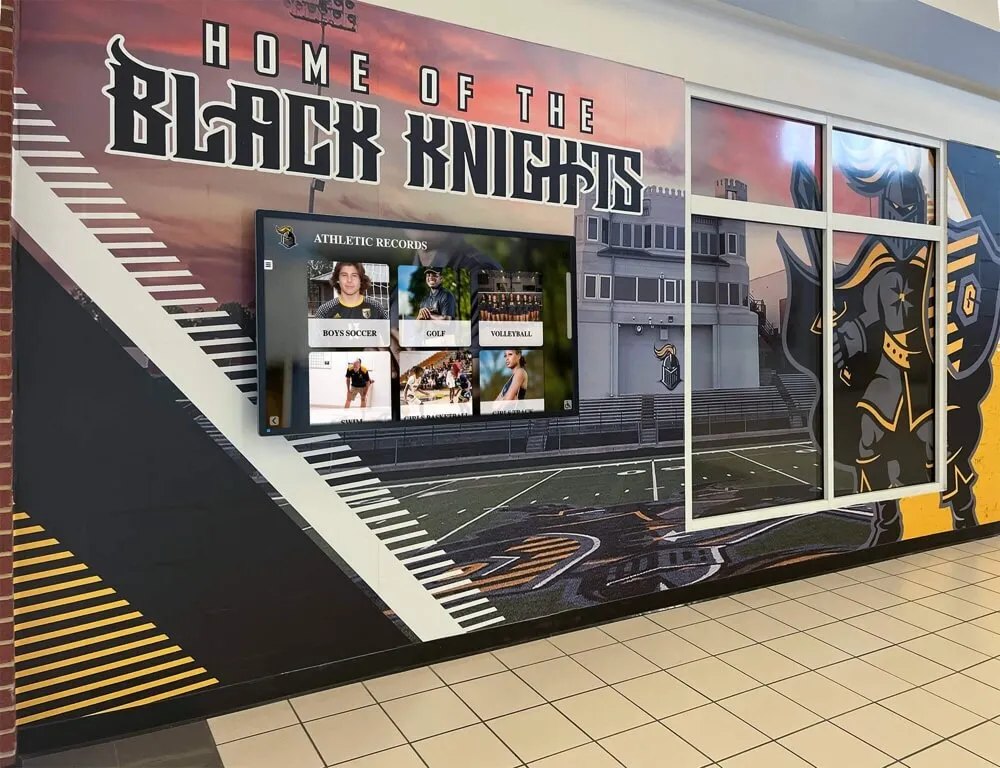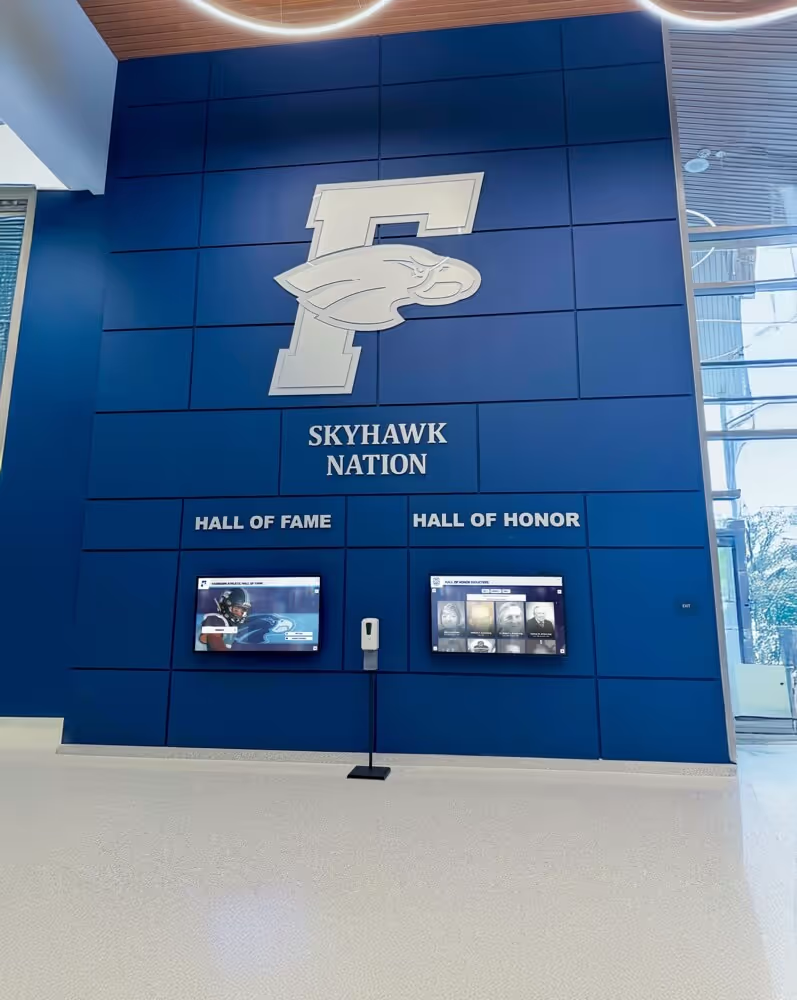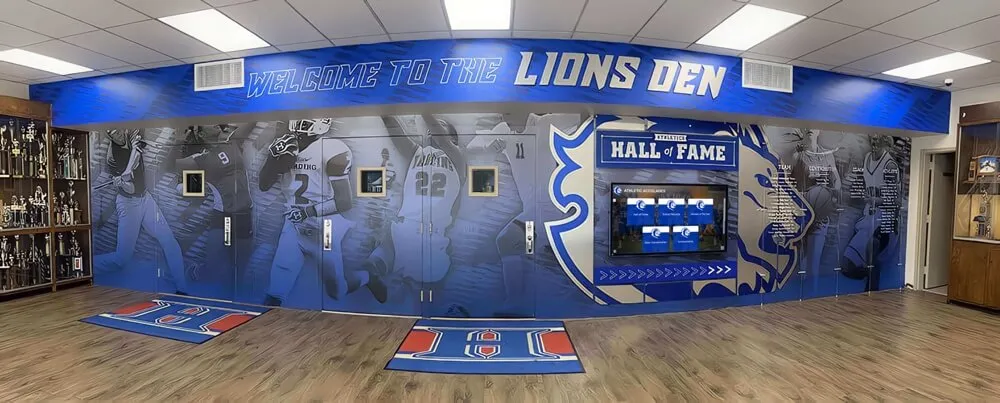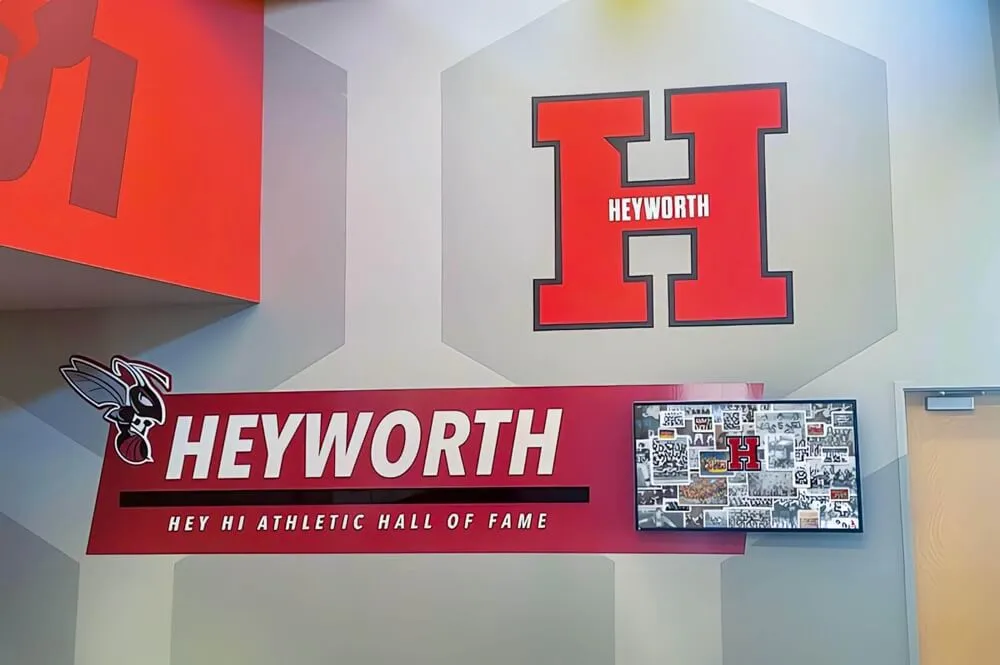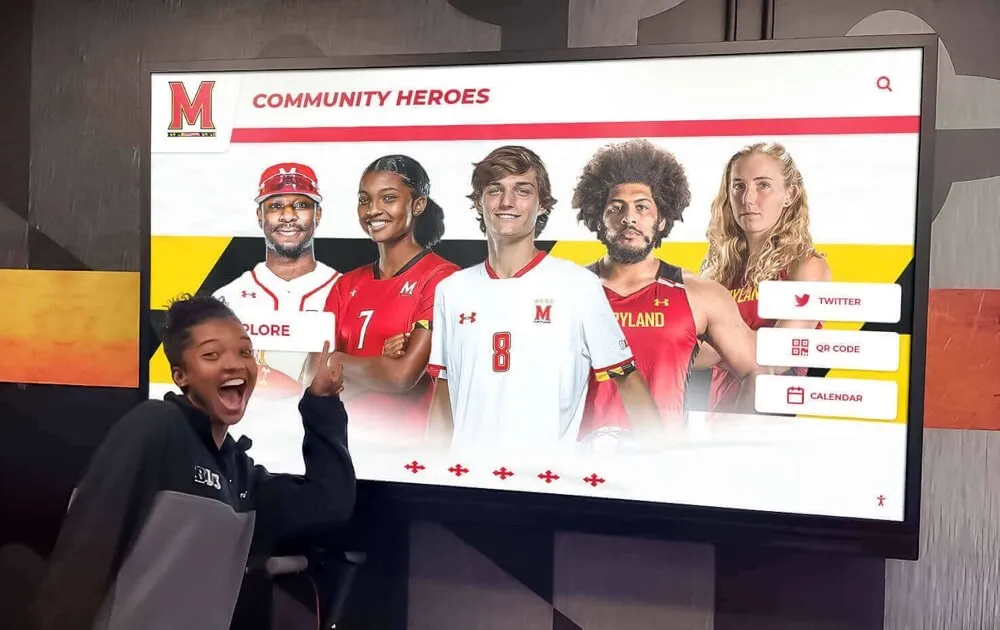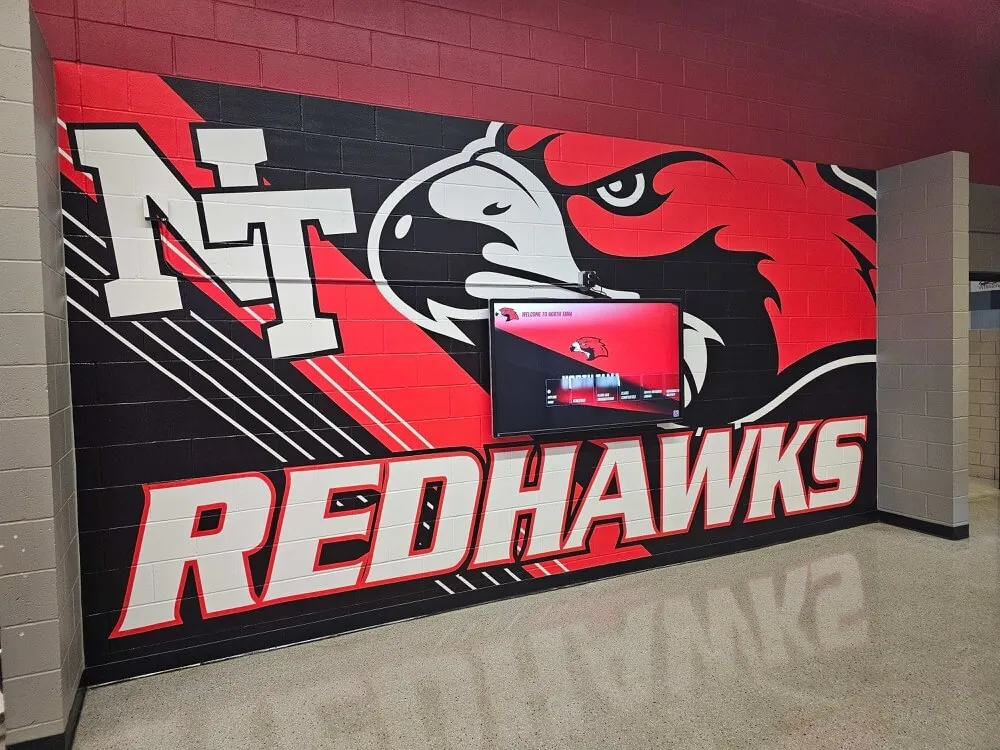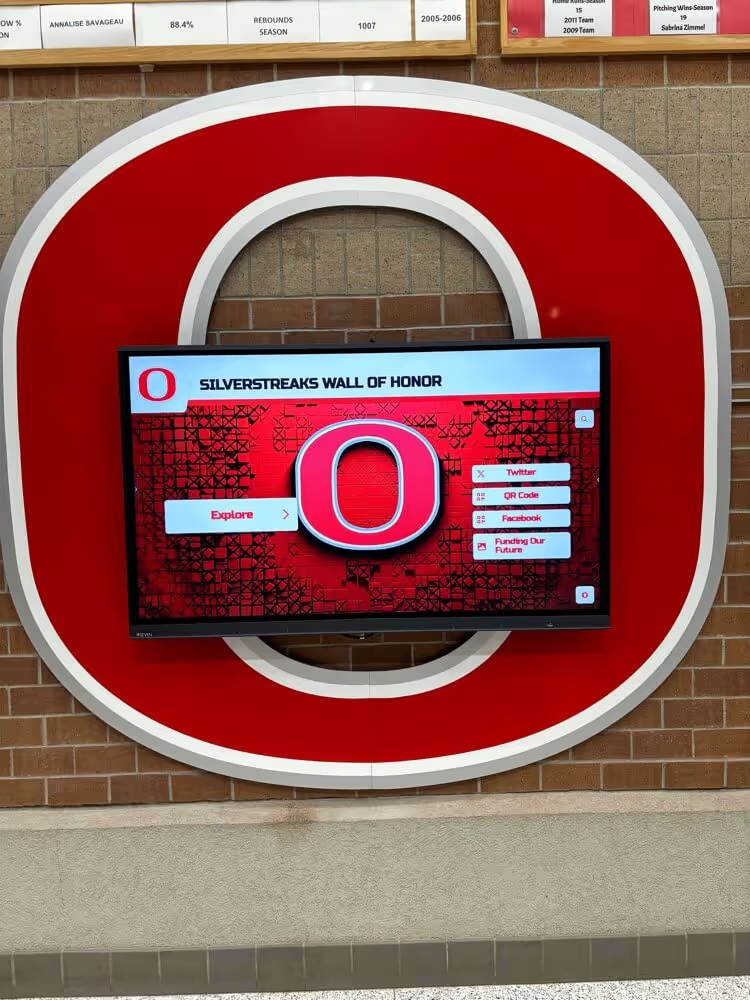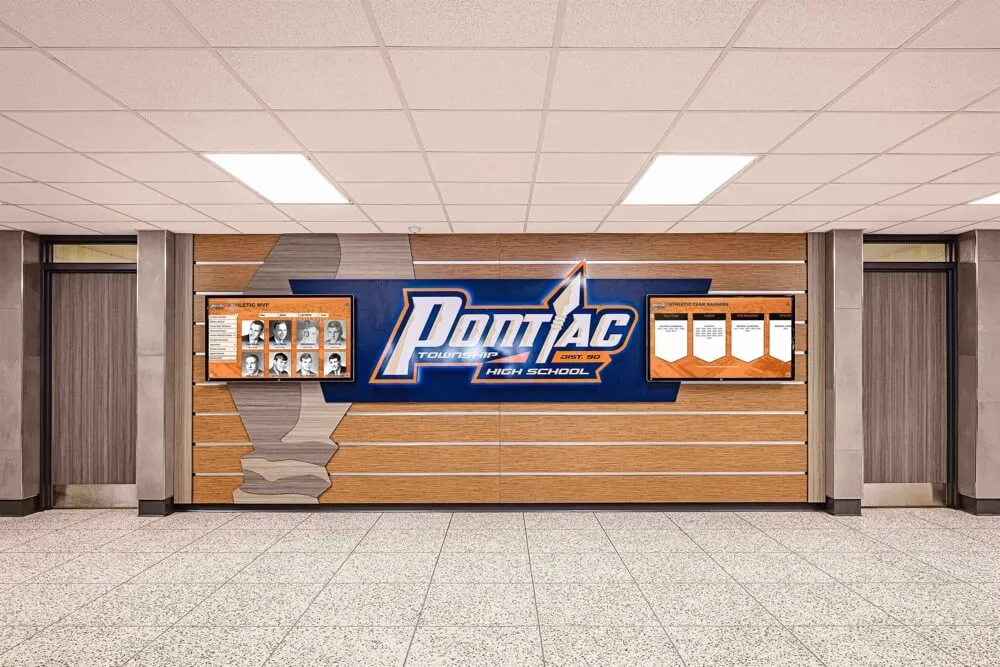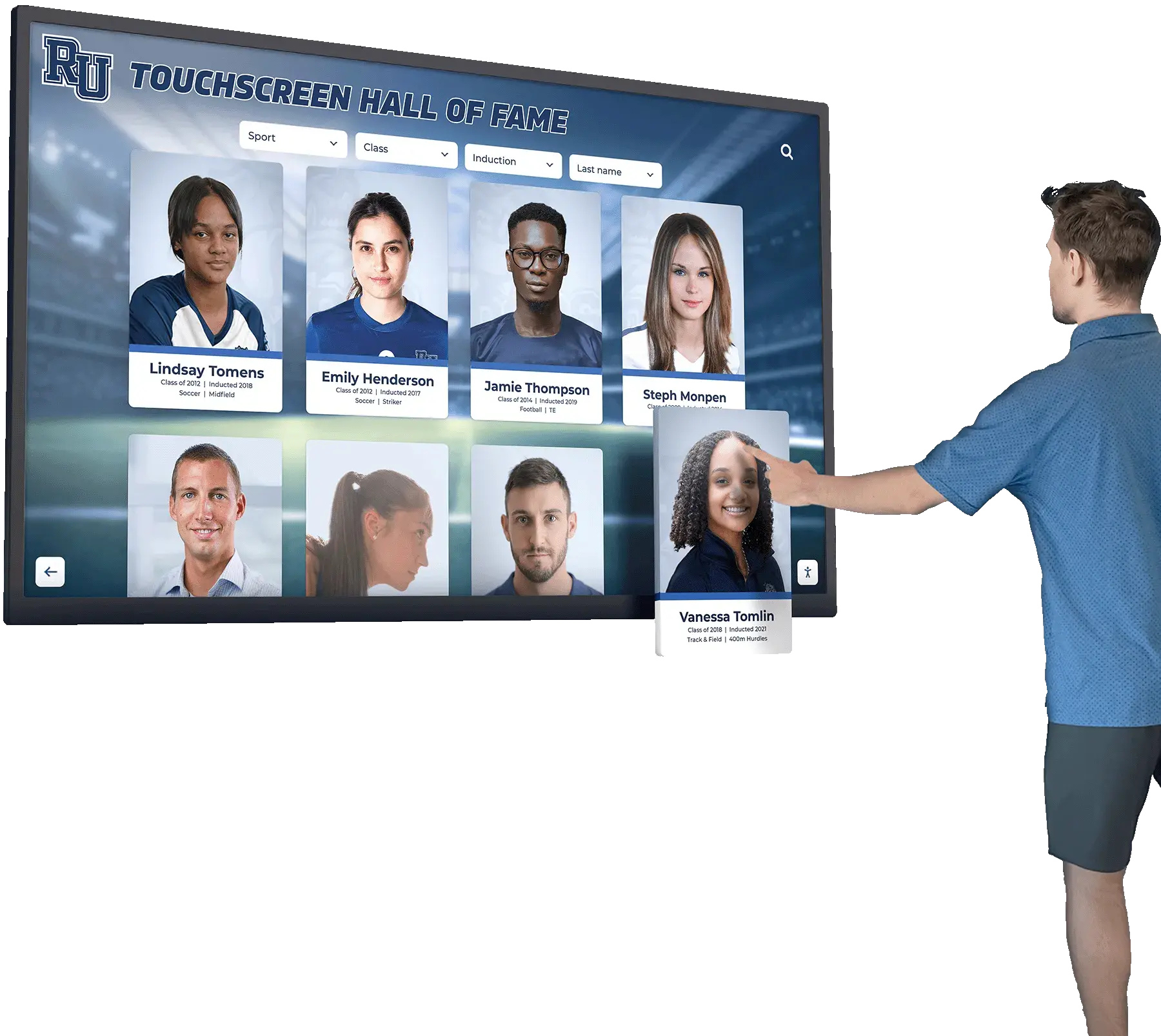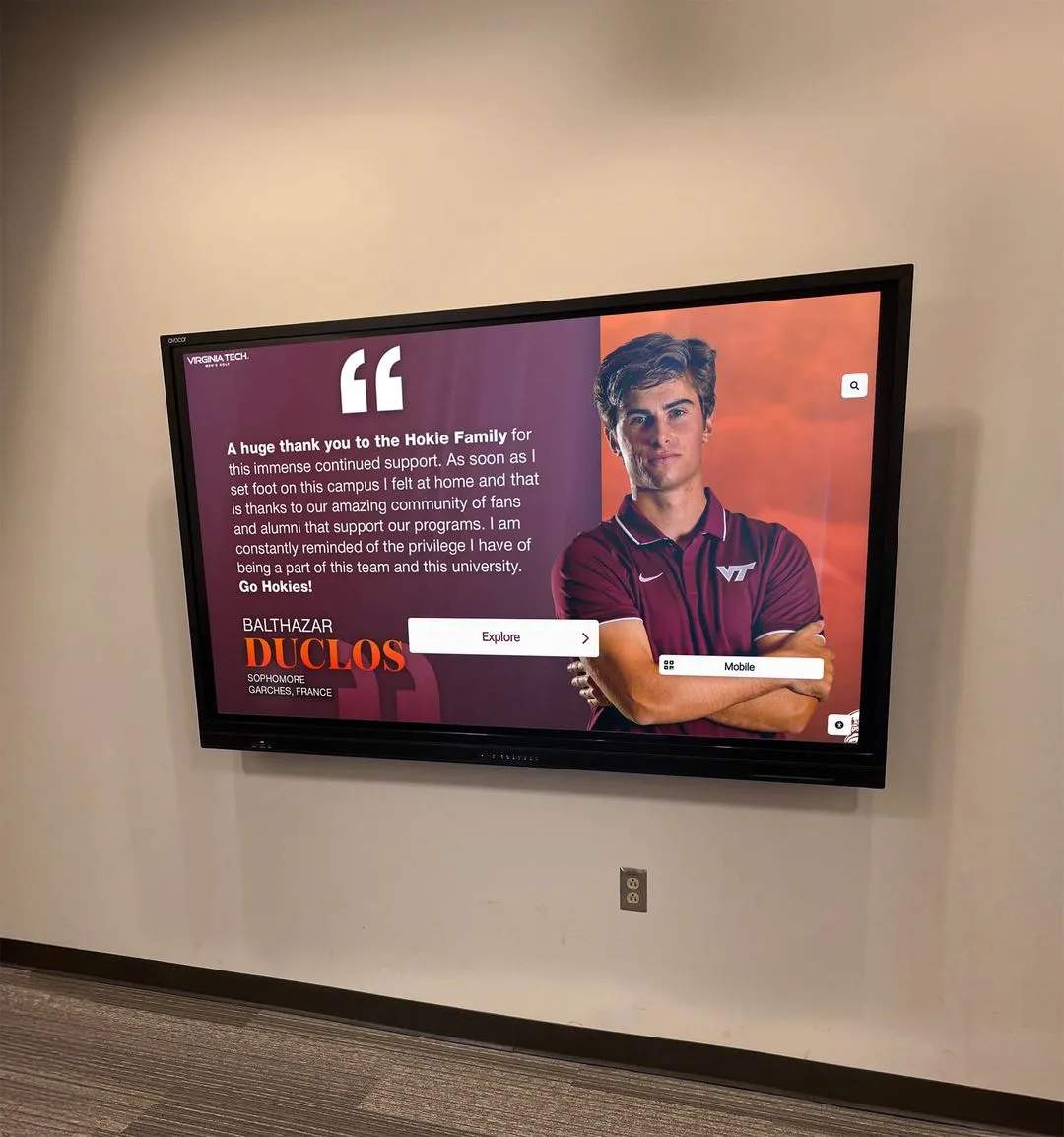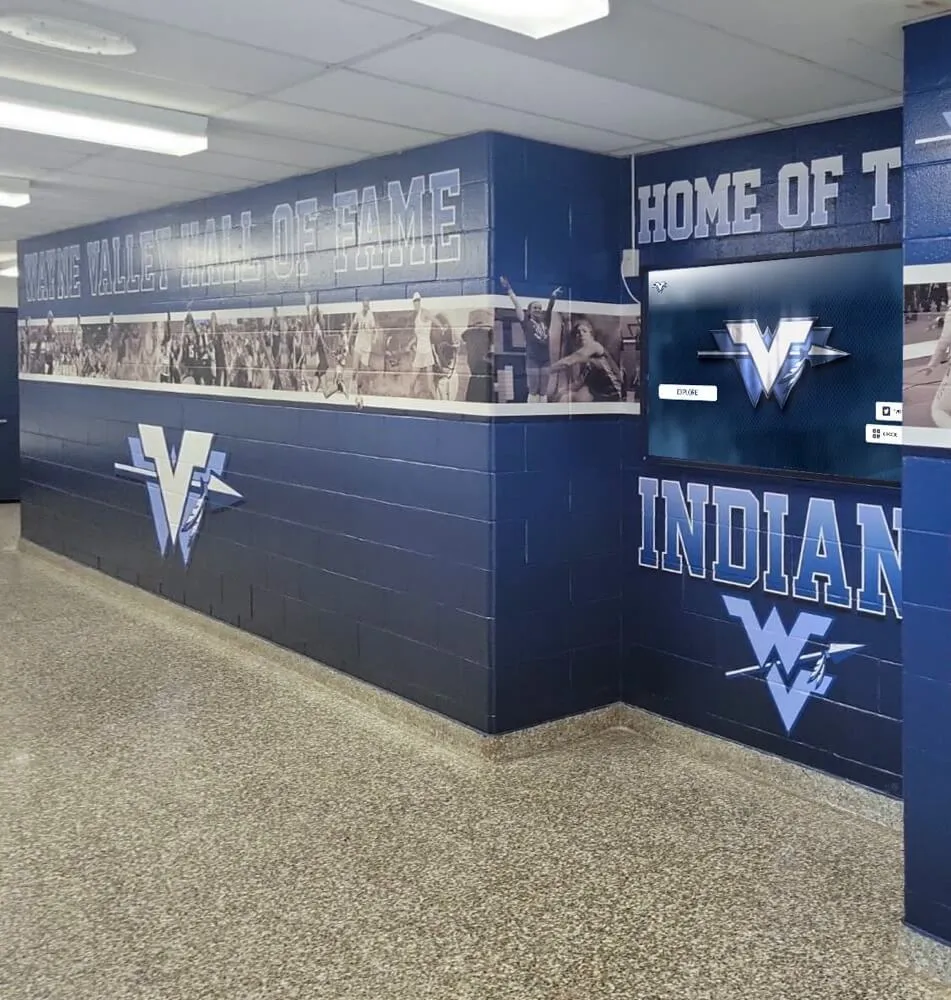Table of Contents
- Understanding Weight Room Recognition Systems
- Essential Metrics and Records to Track
- Digital vs Traditional Weight Room Boards
- Design and Layout Best Practices
- Implementation and Safety Protocols
- Building a Culture of Strength Excellence
Understanding Weight Room Recognition Systems
Modern weight room record boards serve as the cornerstone of strength training culture in athletic programs, creating visual motivation that drives athletes to push beyond their limits while celebrating achievements across all levels of performance.

Advanced weight room record boards transform strength training facilities into centers of excellence and achievement
The evolution of weight room record boards reflects the transformation of strength training from a supplementary activity to a cornerstone of athletic performance. While traditional weight rooms relied on whiteboards and paper charts, modern facilities leverage advanced solutions from providers like Rocket Alumni Solutions to create comprehensive recognition systems that inspire, track, and celebrate strength achievements.
The Psychology of Weight Room Recognition
Understanding why strength training record boards drive performance:
- 🧠Competitive Drive Activation
Visible records create healthy competition that pushes athletes to exceed previous performances and set new personal bests.
- 🎯Goal Visualization
Seeing specific numbers and achievements provides tangible targets that transform abstract goals into concrete objectives.
- 👥Team Culture Building
Shared recognition creates collective investment in strength development and celebrates diverse achievements beyond just maximum lifts.
- 📈Progress Documentation
Historical records provide evidence of improvement over time, reinforcing the value of consistent training and proper technique.
Key Components of Effective Weight Room Boards
Modern weight room record tracking encompasses multiple dimensions:
Performance Metrics
- Absolute Strength: Maximum weight lifted in key exercises
- Relative Strength: Performance relative to body weight
- Power Output: Explosive movements and velocity tracking
- Volume Records: Total tonnage and rep achievements
Recognition Categories
- All-Time Records: Historical best performances
- Season/Annual Bests: Current period achievements
- Most Improved: Progress-based recognition
- Technique Excellence: Form and safety awards
Essential Metrics and Records to Track
Comprehensive weight room record boards capture diverse strength achievements that reflect the multifaceted nature of athletic performance development, ensuring recognition opportunities for athletes at all levels.
Core Strength Movements

Core strength movements form the foundation of comprehensive weight room record tracking systems
Essential lifts for strength training record boards:
- Powerlifting Movements
Back Squat, Bench Press, Deadlift - tracked for 1RM, 3RM, and 5RM - Olympic Lifts
Clean & Jerk, Snatch, Power Clean, Hang Clean variations - Accessory Movements
Overhead Press, Front Squat, Romanian Deadlift, Pull-ups - Sport-Specific Tests
Vertical Jump, Broad Jump, Pro Agility, 40-yard dash times
Comprehensive Tracking Categories
Sample Weight Room Record Board Layout
| Category | Men's Record | Women's Record | Athlete | Date |
|---|---|---|---|---|
| Back Squat | 585 lbs | 365 lbs | See Board | 2024 |
| Bench Press | 405 lbs | 225 lbs | See Board | 2024 |
| Power Clean | 375 lbs | 205 lbs | See Board | 2024 |
| Vertical Jump | 42 inches | 32 inches | See Board | 2024 |
Progressive Achievement Tracking
Modern weight room record systems recognize various achievement levels:
Bronze Standards
Entry-level achievements for developing athletes
- Bodyweight bench press
- 1.5x bodyweight squat
- 2x bodyweight deadlift
- 10+ strict pull-ups
Silver Standards
Intermediate goals for varsity athletes
- 1.5x bodyweight bench
- 2x bodyweight squat
- 2.5x bodyweight deadlift
- 20+ strict pull-ups
Gold Standards
Elite achievements for advanced athletes
- 2x bodyweight bench
- 2.5x bodyweight squat
- 3x bodyweight deadlift
- 30+ strict pull-ups
Special Recognition Categories
- Most Improved Athlete: Largest percentage increase in total or specific lift over a season
- Iron Athlete Award: Perfect attendance and consistent effort throughout training period
- Technique Excellence: Recognition for maintaining perfect form under heavy loads
- Team Contributor: Athletes who consistently spot, encourage, and support teammates
Digital vs Traditional Weight Room Boards
The choice between digital and traditional weight room record boards significantly impacts how programs track, display, and celebrate strength achievements. Modern solutions offer advantages that transform weight room culture.
Traditional Weight Room Display Methods
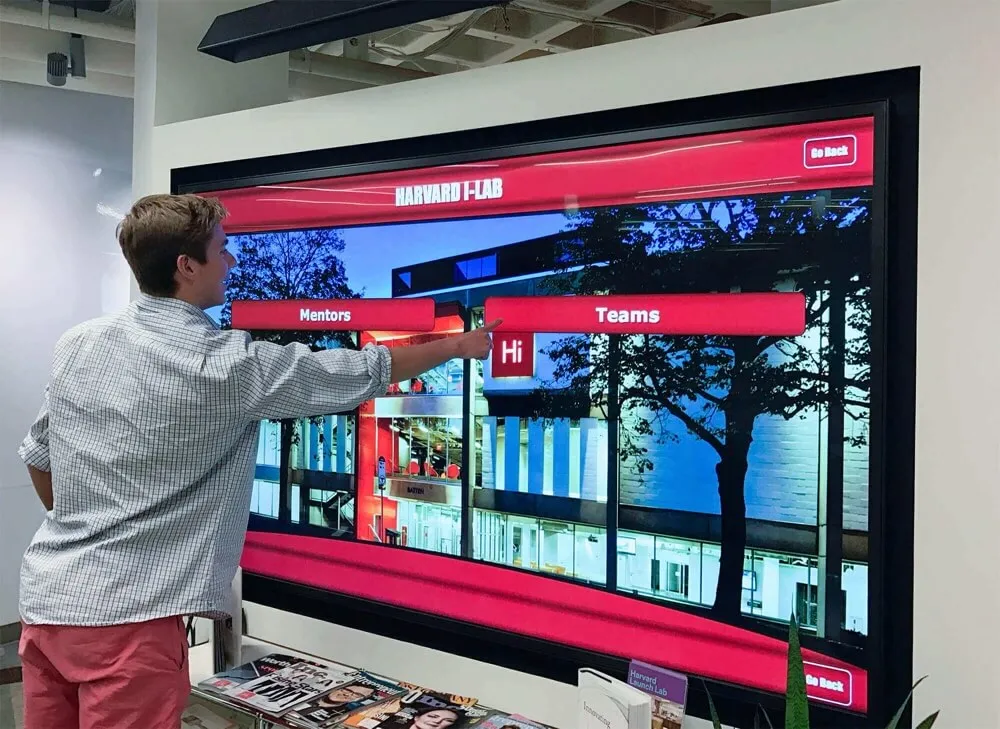
Traditional weight room boards require constant manual updates and limited display capabilities
Limitations of conventional weight room record tracking:
Traditional Whiteboard Systems
- ❌ Manual updates prone to errors
- ❌ Limited space for comprehensive records
- ❌ Difficult to track historical progress
- ❌ Messy appearance over time
- ❌ No backup for erased data
- ❌ Time-consuming maintenance
Paper Chart Systems
- ❌ Easily damaged or lost
- ❌ No real-time updates
- ❌ Difficult to sort or filter data
- ❌ Limited visual appeal
- ❌ Manual calculation requirements
- ❌ Storage space needed
Modern Digital Weight Room Solutions
Advanced digital weight room record boards from Rocket Alumni Solutions revolutionize strength tracking:
- Real-Time Updates Instant record updates from any device, ensuring current information always displayed
- Comprehensive Tracking Unlimited records across all categories, sports, and time periods
- Video Integration Link lift videos for technique review and record verification
- Progress Analytics Automatic calculation of improvements and trend visualization
- Multi-Display Sync Show records on multiple screens throughout facility
- Mobile Access Athletes check records and progress from smartphones
Technology Comparison for Weight Rooms
Weight Room Record Board System Comparison
| Feature | Whiteboard | Printed Charts | Digital System |
|---|---|---|---|
| Update Speed | Manual | Days/Weeks | Instant |
| Data Capacity | Very Limited | Limited | Unlimited |
| Historical Tracking | None | Manual | Automatic |
| Visual Appeal | Basic | Static | Dynamic |
| Cost Over 5 Years | $2,000+ | $5,000+ | $3,000 |
Design and Layout Best Practices
Effective weight room record board design combines visual impact with functional organization, creating displays that inspire athletes while providing clear, accessible information about strength achievements.
Visual Hierarchy and Organization

Professional weight room record board design enhances motivation through clear visual organization
Key design principles for weight room displays:
Layout Structure
- ✓ Group by exercise categories (power, olympic, accessory)
- ✓ Separate men's and women's records clearly
- ✓ Include weight class divisions where applicable
- ✓ Feature "record progression" timeline
- ✓ Highlight recent achievements prominently
Visual Elements
- ✓ Use contrasting colors for readability
- ✓ Include athlete photos with records
- ✓ Display proper form demonstration images
- ✓ Incorporate team colors and branding
- ✓ Add motivational quotes strategically
Space Planning for Weight Room Boards
Optimal placement strategies for strength training record displays:
- 📍Main Platform Area
Position primary record board visible from lifting platforms and squat racks for maximum motivation during heavy attempts.
- 🚪Entry Wall Display
Create impactful first impression with comprehensive record overview as athletes enter the weight room.
- 🔄Multiple Zone Coverage
Install secondary displays in different training areas for sport-specific or exercise-specific records.
Creating Inclusive Recognition Displays
Inclusive Weight Room Recognition Categories
Performance-Based
- • Absolute strength records
- • Relative strength ratios
- • Technical proficiency
- • Competition results
Progress-Based
- • Most improved lifter
- • Consistency awards
- • Personal best streaks
- • Attendance records
Character-Based
- • Best training partner
- • Safety excellence
- • Leadership awards
- • Mentor recognition
Implementation and Safety Protocols
Successful weight room record board programs prioritize safety and proper technique while creating systems that encourage progressive achievement within appropriate training parameters.
Verification and Standards
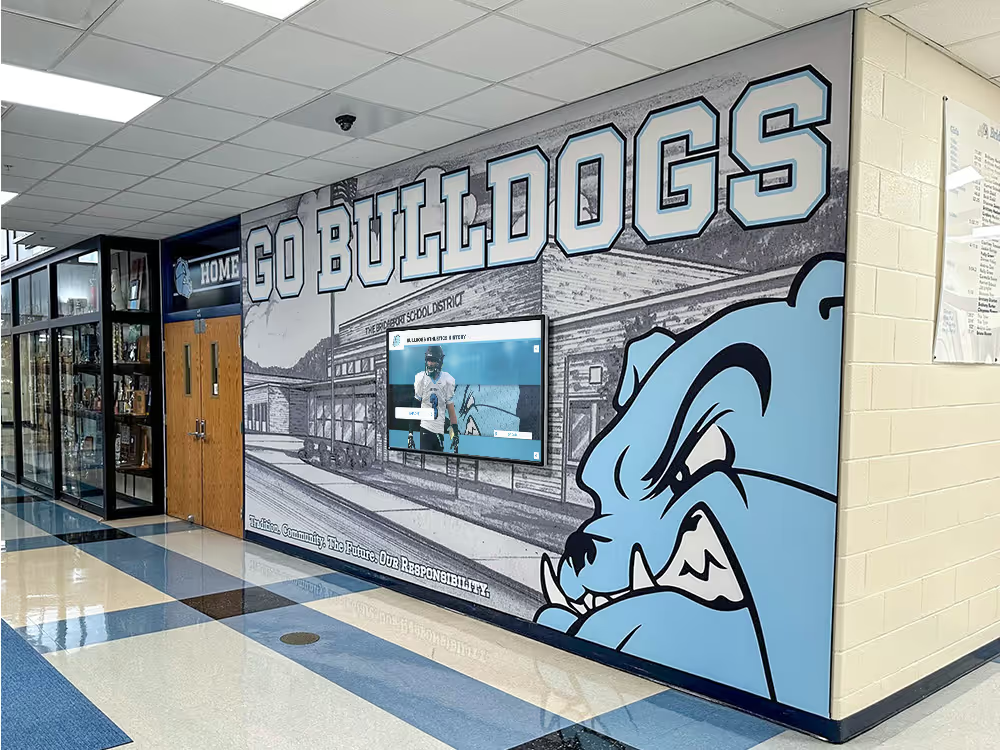
Proper verification protocols ensure weight room records reflect safe, legitimate achievements
Essential protocols for weight room record validation:
- Lift Standards
Clear depth requirements, lockout positions, and technical standards for each movement - Judge Requirements
Certified coach or strength staff must verify all record attempts - Video Documentation
Record attempts filmed from standardized angles for review and verification - Safety Protocols
Mandatory spotters, proper warm-up, and equipment checks before attempts
Implementation Timeline
Strategic rollout of weight room record systems:
Phase 1: Foundation
Weeks 1-2: System setup and standards
- Define lift standards
- Create record categories
- Install display system
- Train staff on protocols
Phase 2: Launch
Weeks 3-4: Initial testing and records
- Baseline testing days
- Establish initial records
- Athlete education
- Celebration events
Phase 3: Culture
Ongoing: Build lasting impact
- Regular testing cycles
- Progress tracking
- Recognition ceremonies
- Alumni involvement
Building a Culture of Strength Excellence
Transforming weight room record boards from simple displays into powerful cultural tools requires intentional programming that celebrates achievement while promoting safe, progressive training practices.
Creating Sustainable Motivation
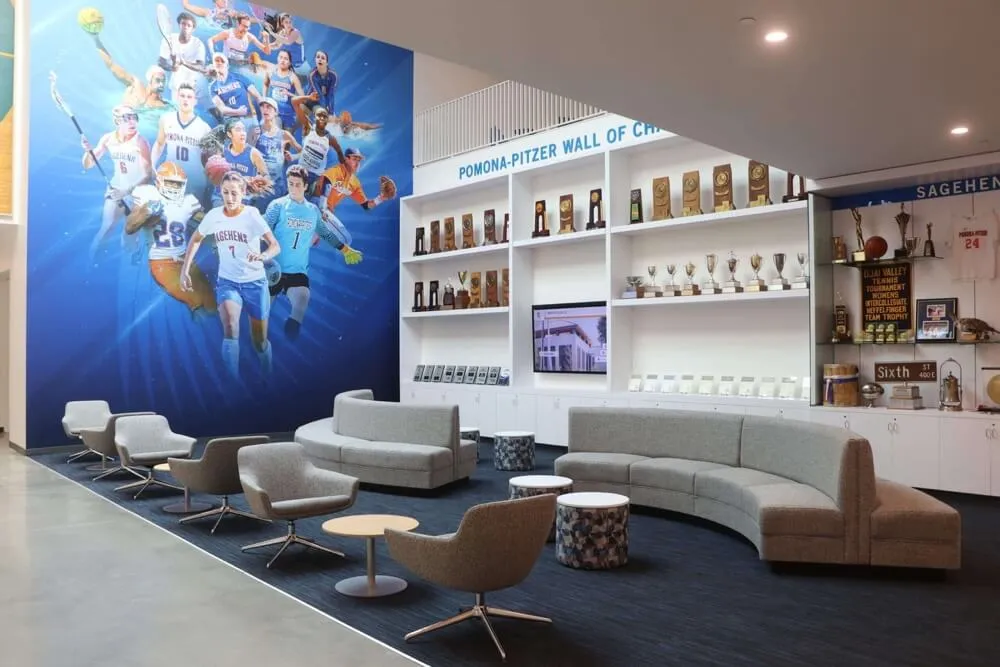
Weight room culture thrives when record boards celebrate all forms of strength achievement
Strategies for building lasting weight room culture:
Recognition Programs
- • Monthly "Iron Athlete" awards
- • Seasonal record-breaking ceremonies
- • Social media record highlights
- • Alumni record holder events
- • Technique excellence recognition
- • Team total competitions
Educational Integration
- • Proper form video libraries
- • Nutrition education displays
- • Recovery protocol information
- • Training principle explanations
- • Safety reminder rotations
- • Progress tracking tutorials
Long-term Program Success
Elements that ensure weight room record board longevity:
- Alumni Engagement: Create legacy displays connecting current athletes to program history
- Multi-Sport Integration: Design systems that work across all athletic programs
- Community Involvement: Host record-day events open to supporters and families
- Continuous Evolution: Regularly update categories and standards to maintain relevance
Transform Your Weight Room Culture
Elevate your strength training program with modern weight room record boards that inspire achievement, ensure safety, and build lasting athletic culture. Experience the power of professional recognition systems designed specifically for weight rooms.
Modern weight room record boards represent far more than simple strength tracking—they embody the culture, dedication, and collective achievement of athletic programs. The evolution from basic whiteboards to sophisticated digital systems from providers like Rocket Alumni Solutions reflects the growing understanding of how visual recognition drives performance improvement.
Successful weight room recognition programs balance multiple objectives: celebrating elite performance while recognizing improvement at all levels, maintaining rigorous safety standards while encouraging ambitious goals, and honoring tradition while embracing technological advancement. The most effective systems create inclusive environments where every athlete finds motivation to pursue personal excellence.
The investment in quality weight room record display systems pays dividends through increased training motivation, improved technique focus, stronger team culture, and lasting connections between current athletes and program alumni. As strength training continues evolving as a cornerstone of athletic development, the role of comprehensive record boards in driving that evolution becomes increasingly vital.
For programs ready to elevate their weight room culture, explore our guides to implementing digital record boards and discover how modern recognition technology can transform your strength training environment.






